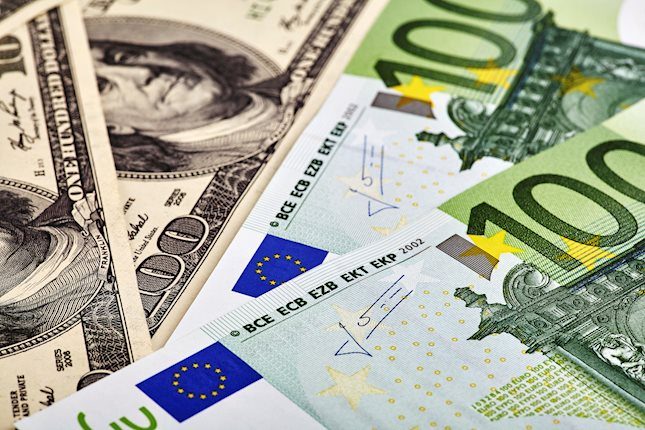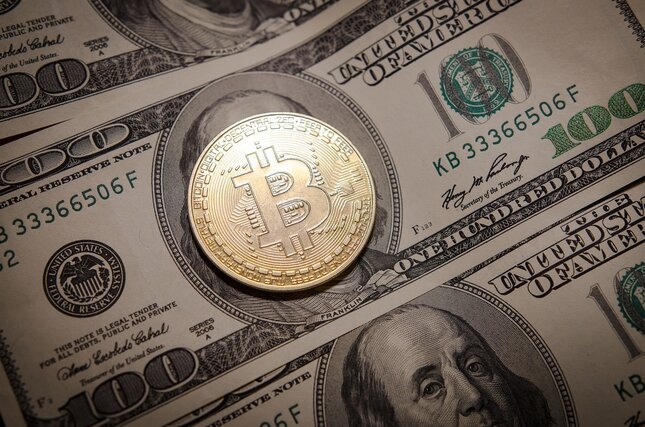- Will Retail Sales Revive USD/JPY and Equity Rally?
- NZD: RBNZ Says Rates will be at 4.75% in Q1 2016
- AUD: Sells Off Aggressively Ahead of Employment Report
- CAD: Rallies for Fifth Straight Day
- ECB Draghi Speech to Determine if EUR Hits 2 Year Highs
- GBP: Shrugs Off Optimistic Comments from MPC Official
- JPY: Hit Hard by Risk Aversion and Profit Taking
Will Retail Sales Revive USD/JPY and Equity Rally?
The S&P 500 experienced its single largest one-day decline since November and the risk aversion that followed drove all of the major currencies lower against the U.S. dollar except for the euro. The EUR/USD's resilience continues to befuddle and amaze investors who have watched the currency pair rally in the face of weakening Eurozone data and increased expectations for Fed tapering. Every major financial news publication has attributed the sell-off in stocks and rise in bond yields to the budget deal and how it could make the Federal Reserve's decision to taper easier. However if that is true, the EUR/USD should also be trading lower but instead the currency pair came within 25 pips of its 2-year high. These gains can't be sustainable unless the fundamental outlook for the Eurozone or U.S. changes. The EUR/USD move aside, tomorrow's U.S. retail sales report holds the key to the revival of the dollar and equity rally.
The December FOMC meeting is less than a week away and there is only 1 piece of U.S. data between now and then that could push the central bank to lean towards earlier versus later tapering and that is retail sales. If consumer spending rises more than 1% in November, the Fed will have the confidence to reduce bond purchases this month and the expectations for earlier tapering should drive USD/JPY to fresh highs. However if spending growth slows to 0.2% or less, the FOMC may choose to wait until the holiday shopping season is over and this delay could trigger profit taking in risk currencies. According to the International Council of Shopping Centers and the Johnson Redbook survey, retail sales growth slowed but payrolls have been strong and the healthier labor market could have also lent support to spending.
When it comes to the monetary policy decision, the two most important considerations for the Federal Reserve should be the outlook for the economy and the potential reaction in the financial markets. However there is one additional factor that could affect their decision to taper or not taper before the end of the year and that is Bernanke's legacy. There is no question in our minds that the man who has served as the head of the U.S. central bank for the past 7 years is thinking about whether he wants to end his legacy being known as the person who halted the Santa Claus rally or worse, the Grinch who stole Christmas. The increased odds of December tapering have already weighed on equities, which struggled to extend higher after Friday's blow out non-farm payrolls report. The holidays are always a sensitive time for the economy and financial markets as it is the final opportunity for U.S. companies to attract a burst of revenue and end the year in the green. Anything that could threaten this progress would be counterproductive for the overall economy especially given the vulnerability of the current recovery.
With this in mind, we took a look at how many times the Federal Reserve tightened monetary policy in the month of December and found that over the past 30 years, the central bank changed interest rates 13 times before the holidays and only 4 of those moves was to raise rates. They tightened monetary policy in 2005, 2004, 1988 and 1986. With the exception of 1986, the increase in interest rates was consistent with a long period of tightening that started well before the December meeting and continued well into the next year. In 1986, the rate hike was the first of a series of moves. This study suggests that while the central bank has no qualms about loosening monetary policy before the holidays, they are much more reluctant to tighten it. Of course, the current level of monetary stimulus is different from anything that we have seen in the past and unprecedented times could call for unprecedented measures. Even if the Fed chooses to reduce stimulus this month, it leaves monetary policy extremely accommodative. So while history suggests that the central bank will prefer to wait until after the holidays to reduce monthly bond buys, knowing that they are delaying the inevitable, December tapering is still on the table.
NZD: RBNZ Says Rates will be at 4.75% in Q1 2016
The New Zealand and Canadian dollars fell sharply against the greenback today but unlike AUD which ended the day near its lows, NZD recovered over half of the day's losses after the Reserve Bank of New Zealand's monetary policy announcement. While the central bank left interest rates unchanged at 2.5%, they said that it is becoming unnecessary to keep the rate at this level. As such they expect to start withdrawing stimulus in 2014 and in 2.25 years time, they see interest rates at 4.75%. The RBNZ is the only major central bank talking about raising interest rates and this hawkish bias should attract additional demand for kiwis. In support of their optimistic views, the central bank also raised its 2015 GDP forecast from 2.3% to 2.8%. The economic expansion has considerable momentum according to the RBNZ. Yet they are still worried about the level of the currency. Central Bank Governor Wheeler said the exchange rate is not sustainable at this level over the long term and his comment about Fed tapering happening soon suggests that they may be hoping that the U.S. dollar will rise and bring the NZD/USD exchange rate lower. The strong currency is easing inflation pressures and this dynamic has prompted the RBNZ to cut its 2014 CPI forecast to 1.5% from 1.9%. Yet the main takeaway from today's announcement is that even though the central bank is worried about the strong currency, their discomfort will not stop them from raising interest rates next year. The New Zealand dollar is one of our favorite currencies for 2014 and before the end of 2014, we expect AUD/NZD to drop to 1.05. Meanwhile the currency that has been hit the hardest by risk aversion is the Australian dollar. Employment numbers are due for release this evening and while the PMI reports show an improvement in labor market conditions in the service and manufacturing sectors, consumer confidence also weakened, raising concerns about the overall strength of the labor market. No economic data was released from Canada but did not stop the currency from quietly trickling higher versus the dollar for the fifth consecutive trading day.
ECB Draghi Speech to Determine if EUR Hits 2 Year Highs
EUR/USD came within 25 pips of its year to date high. The sell-off in U.S. equities drove all of the major currencies lower with the exception of the euro. Eurozone industrial production numbers are due for release tomorrow and even though we have strong reasons to believe that manufacturing activity declined across the region, a softer release may end up having zero impact on the currency. The euro shrugged off back to back disappointments in Eurozone data along with additional talk of potential tools at the ECB's disposal. This morning Governing Council member Coeure said the central bank could cut the deposit rate if necessary and combine different policy measures but as investors have quickly learned, being able to increase stimulus does not mean that the central bank is willing to do so. ECB President Draghi will be speaking tomorrow on ECB policy and the euro would have been trading lower if he did not brushed off the possibility of negative rates at the last central bank meeting. So we will be listening closely to see if he repeats these views. If so, it could provide a jolt of support to the EUR/USD that could take the pair to fresh 2 year highs.
GBP: Shrugs Off Optimistic Comments from MPC Official
Risk aversion drove the British pound lower against the U.S. dollar and euro. No U.K. economic reports were released today and this lack of data could be the very reason why there has been no continuation since Tuesday's breakout. Comments from Bank of England Monetary Policy Committee member Martin Weale also failed to have a lasting impact on the currency. Speaking on the topic of forward guidance, Weale said their guidance has made monetary policy clearer and there was no impact on the market because it was introduced at a time when the economy did not need more stimulus. His comments on the economy provided some clues on how he leans on monetary policy. According to Weale, the U.K. economy has seen sharp favorable change in outlook and as a result, the MPC may have to reassess their 7% unemployment threshold. He also feels that inflation expectations could rise due to higher energy prices. This combination of an optimistic outlook on the economy and concerns about inflation suggests that if given the opportunity, Weale would vote in favor of less stimulus. With no U.K. economic reports on the calendar tomorrow, the outlook for sterling continues to hinge on risk appetite and the markets demand for dollars.
JPY: Hit Hard by Risk Aversion and Profit Taking
With the S&P 500 dropping by its largest amount since early November all of the Japanese Yen crosses have been hit hard by risk aversion and profit taking. The biggest loser was AUD/JPY, which fell more than 1% ahead of the Australian employment report. While this is the second day in a row that USD/JPY declined, the fact that the currency pair ended the North American trading session off its lows is a reflection of its overall strength. However USD/JPY will not be able to rally if U.S. equities do not resume their rise and this will largely be contingent upon tomorrow's U.S. retail sales report. Meanwhile the Japanese economy continues to perform well with machine orders rising 0.6% in October after falling 2.1% in September. Combined with the rise in machine tool orders, capital investment is expected to contribute to Q4 GDP growth. The domestic corporate goods price index also increased 0.1% and while the rise was small, price pressures are moving in the Bank of Japan's desired direction. Looking ahead, the Ministry of Finance will release its weekly portfolio flow report and we expect Japanese investors to increase their demand for foreign bonds. We suspect that long USD/JPY positions remain near record highs after the recent decline so retail sales needs to surprise in a very big way to renew the uptrend in the currency pair before the FOMC meeting.
Recommended Content
Editors’ Picks

EUR/USD clings to recovery gains near 1.0850 ahead of Fedspeak
EUR/USD trades in positive territory near 1.0850 on Friday following a four-day slide. China's stimulus optimism and a broad US Dollar correction help the pair retrace the dovish ECB decision-induced decline. All eyes remain on the Fedspeak.

GBP/USD pares UK data-led gains at around 1.3050
GBP/USD is trading at around 1.3050 in the second half of the day on Friday, supported by upbeat UK Retail Sales data and a pullback seen in the US Dollar. Later in the day, comments from Federal Reserve officials will be scrutinized by market participants.

Gold at new record peaks above $2,700 on increased prospects of global easing
Gold (XAU/USD) establishes a foothold above the $2,700 psychological level on Friday after piercing through above this level on the previous day, setting yet another fresh all-time high. Growing prospects of a globally low interest rate environment boost the yellow metal.

Crypto ETF adoption should pick up pace despite slow start, analysts say
Big institutional investors are still wary of allocating funds in Bitcoin spot ETFs, delaying adoption by traditional investors. Demand is expected to increase in the mid-term once institutions open the gates to the crypto asset class.

Canada debates whether to supersize rate cuts
A fourth consecutive Bank of Canada rate cut is expected, but the market senses it will accelerate the move towards neutral policy rates with a 50bp step change. Inflation is finally below target and unemployment is trending higher, but the economy is still growing.

Best Forex Brokers with Low Spreads
VERIFIED Low spreads are crucial for reducing trading costs. Explore top Forex brokers offering competitive spreads and high leverage. Compare options for EUR/USD, GBP/USD, USD/JPY, and Gold.